The underwater world holds countless marvels, but perhaps few are as peculiar and fascinating as the Tentacled Snake (Erpeton tentaculatum) – the only snake in the world known to swim upside down. This remarkable reptile has evolved a suite of specialized adaptations that allow it to perform this counter-intuitive feat with surprising grace and purpose. While most aquatic creatures rely on conventional swimming techniques, this unusual serpent defies expectations, turning our understanding of snake locomotion on its head – quite literally. In the murky waters of Southeast Asia, this specialized predator demonstrates that evolution sometimes finds success in the most unexpected approaches to survival.
The Tentacled Snake: An Introduction to the Upside-Down Swimmer
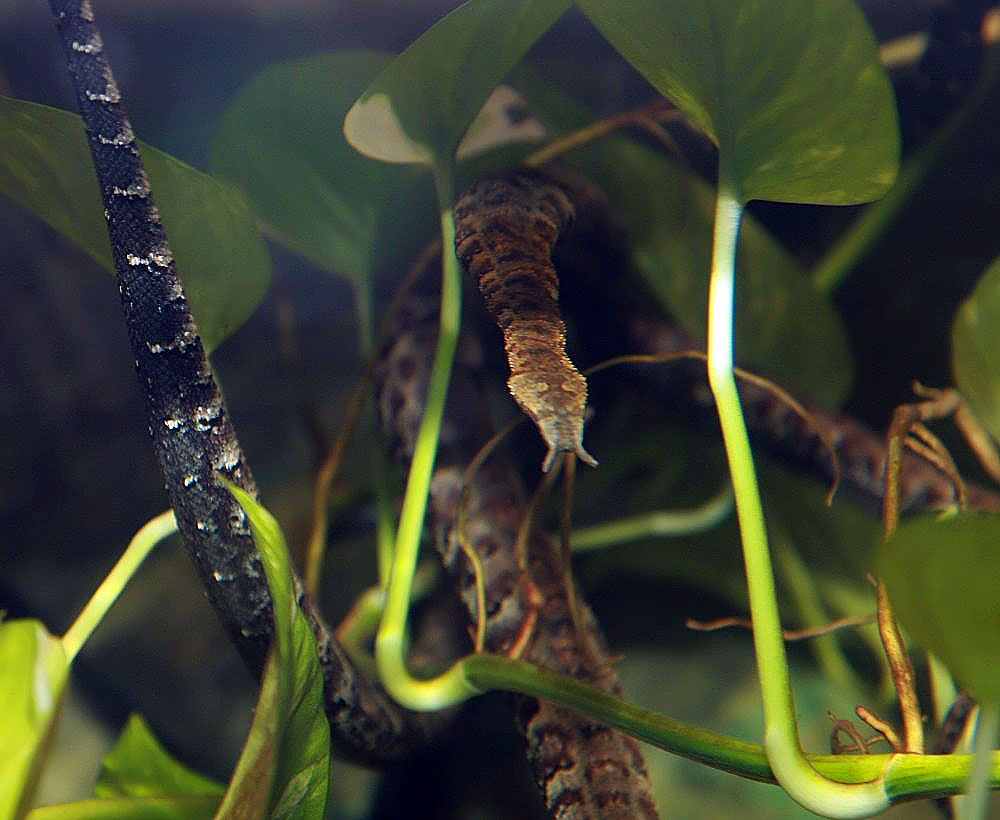
The Tentacled Snake (Erpeton tentaculatum) is a fully aquatic species native to the freshwater bodies of Southeast Asia, particularly Thailand, Cambodia, and Vietnam. Unlike its terrestrial relatives, this snake spends its entire life in water, having evolved unique adaptations specifically for this underwater lifestyle. Most remarkably, it possesses the extraordinary ability to swim and hunt while completely inverted – a behavior rarely observed in vertebrates. The snake belongs to the Homalopsidae family, commonly known as the Indo-Australian water snakes, but stands out among its relatives for its specialized hunting techniques and distinctive physical features. First described scientifically in 1800, this species continues to fascinate herpetologists and casual observers alike with its counter-intuitive swimming capabilities.
The Distinctive Physical Features
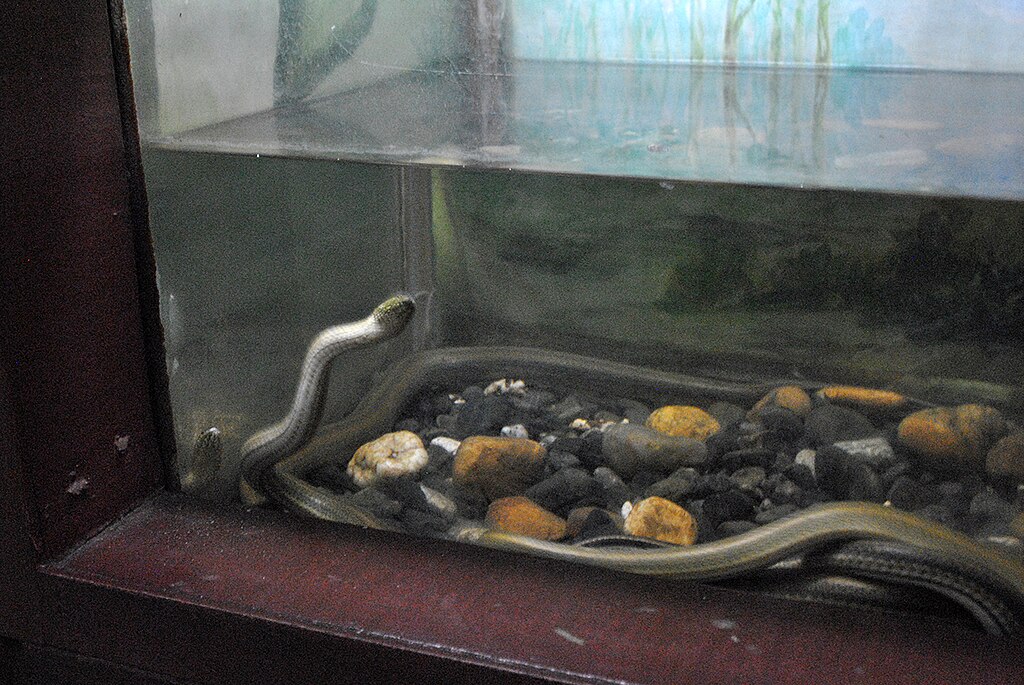
The Tentacled Snake possesses several unmistakable physical characteristics that set it apart from other aquatic serpents. Most notably, it features two scaly tentacles protruding from its snout, which serve as highly sensitive tactile organs for detecting prey movements in murky waters. Growing to an average length of 20-30 inches (50-75 cm), these snakes display cryptic coloration patterns of browns, grays, and tans that perfectly mimic submerged branches or roots. Their bodies are relatively slender with slightly flattened tails that function as effective paddles during swimming. Unlike many aquatic snakes that must surface regularly to breathe, the Tentacled Snake possesses specialized scales that can trap air bubbles against its skin, allowing it to extract oxygen directly from the water during extended underwater periods. This combination of features creates a perfectly adapted aquatic predator capable of thriving in environments few other snakes could survive.
The Evolutionary Advantage of Upside-Down Swimming

Swimming upside down might seem counterintuitive, but for the Tentacled Snake, this unusual technique offers several significant advantages. Primarily, this inverted posture allows the snake to conceal its silhouette against the water’s surface when viewed from below, effectively camouflaging it from potential prey. The snake’s ventral (belly) scales typically have darker coloration than its dorsal (back) side, creating a form of counter-shading when inverted that helps it blend with the darker water surface above. Additionally, swimming upside down positions the snake’s mouth in the optimal orientation for its specialized “strike from below” hunting technique. Research has shown that this inverted swimming posture also provides hydrodynamic advantages in the still or slow-moving waters these snakes prefer, requiring less energy than conventional swimming. Through millions of years of evolution, this seemingly odd behavior has proven to be a highly effective survival strategy for this specialized predator.
The Mechanics of Inverted Swimming
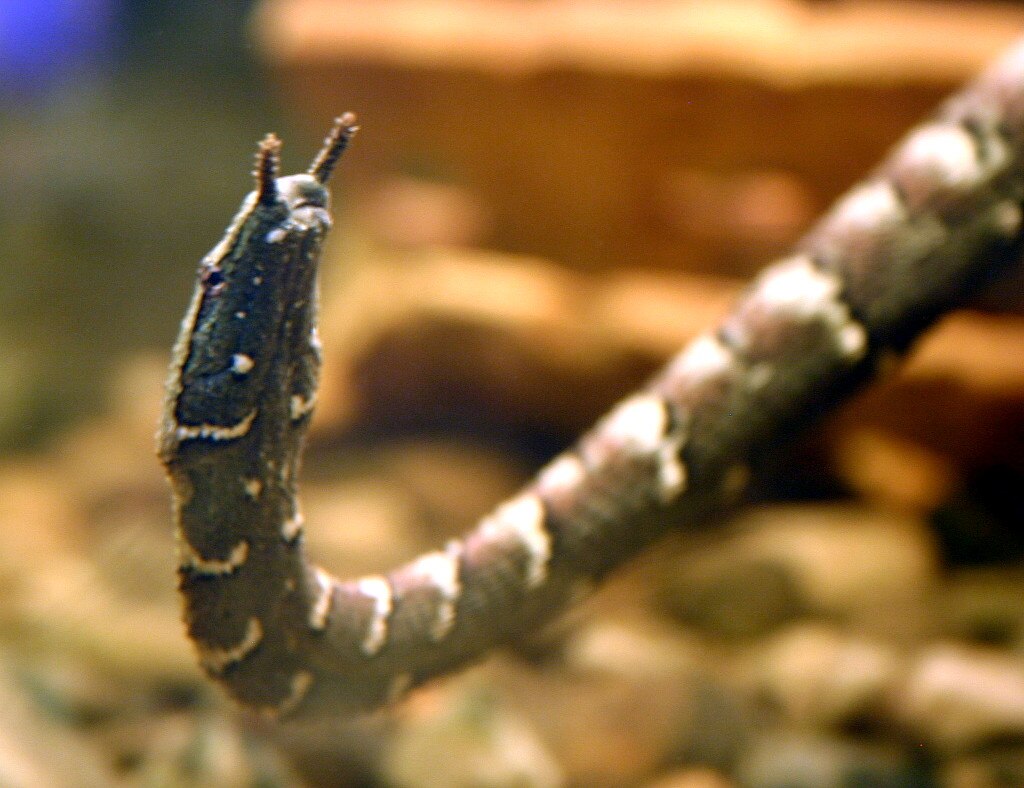
The Tentacled Snake’s ability to swim upside down involves a complex coordination of muscle movements and specialized body adaptations. Unlike other aquatic snakes that rely primarily on lateral undulations (side-to-side movements), the Tentacled Snake utilizes a combination of subtle body flexions and its slightly flattened tail to maintain its inverted position. This snake possesses a unique distribution of air sacs and modified lung structure that alters its buoyancy, making the inverted position physically easier to maintain than it would be for other serpents. Anatomical studies have revealed specialized muscles along the snake’s spine that allow it to twist its body longitudinally with minimal effort, maintaining the upside-down orientation without constant exertion. The snake’s vertebrae also show adaptations that permit greater rotational movement than those of related species, further facilitating this unusual swimming technique. When observed underwater, their movements appear eerily effortless, as though defying the very physics that govern other swimming creatures.
Hunting Techniques of the Upside-Down Predator

The Tentacled Snake has perfected a hunting strategy directly tied to its upside-down swimming ability, making it one of the most efficient aquatic ambush predators. Rather than actively pursuing prey, these snakes adopt a rigid, twig-like posture, often forming a distinctive J-shape with their bodies while hanging inverted in the water. In this position, they may remain virtually motionless for hours, waiting for fish to venture within striking range. When a fish approaches, the snake doesn’t actually strike at the prey’s current position but instead anticipates the fish’s escape response, striking at where the fish will be. High-speed video analysis has shown that the snake creates a slight pressure wave by moving part of its body, triggering the fish’s reflexive escape response, then striking with incredible precision at the predicted escape path. This sophisticated predictive strike, combined with their inverted hunting posture, gives the Tentacled Snake one of the highest successful strike rates among all ambush predators in the animal kingdom.
Habitat and Distribution
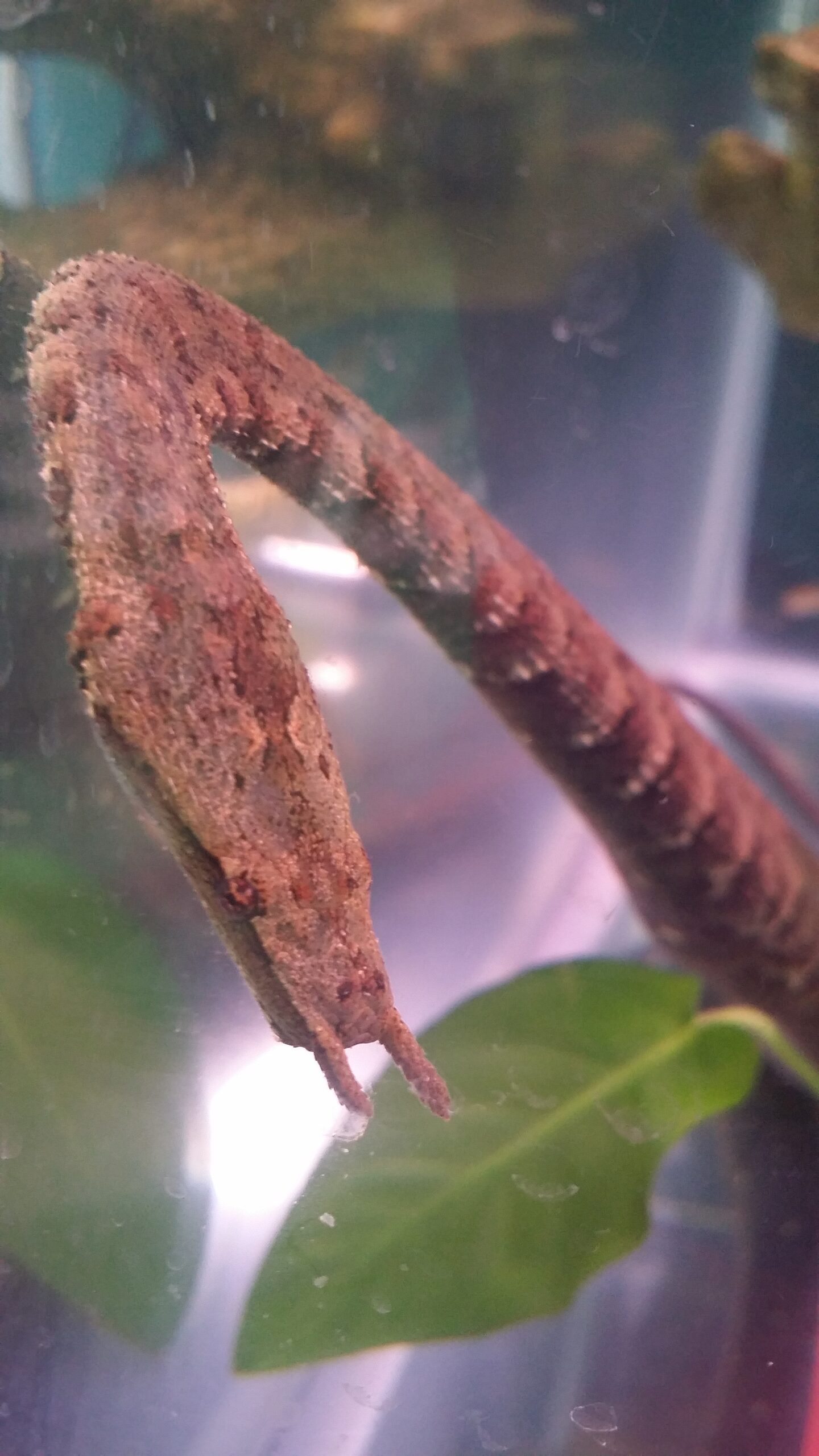
The Tentacled Snake inhabits slow-moving freshwater environments throughout parts of Southeast Asia, with significant populations in Thailand, Cambodia, Vietnam, and the Malaysian Peninsula. These specialized reptiles show a distinct preference for shallow, vegetated waters such as rice paddies, marshes, ponds, and the calm backwaters of rivers where their ambush hunting technique is most effective. They are rarely found in fast-flowing water bodies or deep lakes where their specialized hunting strategy would be less effective. Within their preferred habitats, these snakes typically position themselves among aquatic vegetation or submerged roots that provide both camouflage and stable anchor points for their ambush positions. Human development and agricultural practices have actually expanded suitable habitat in some regions, as rice paddies create ideal conditions for these adaptable serpents. However, water pollution and wetland drainage in other areas have reduced viable habitat, creating a complicated conservation picture across their range.
Reproduction and Life Cycle
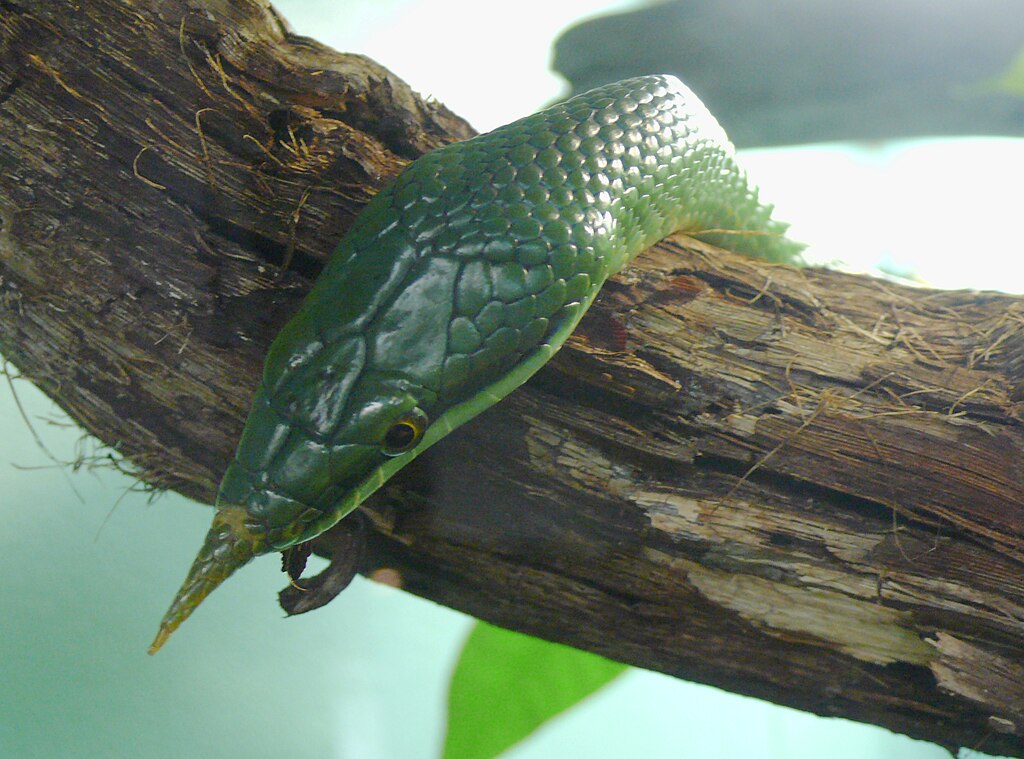
Unlike most snakes that lay eggs, the Tentacled Snake is ovoviviparous, meaning females give birth to fully-formed live young after eggs develop inside the mother’s body. This reproductive strategy is particularly advantageous for a fully aquatic species, as it eliminates the need to find suitable terrestrial egg-laying sites. Female Tentacled Snakes typically produce 5-13 young per litter, with births generally occurring during the rainy season when food resources are most abundant. The newborn snakes, measuring approximately 7-8 inches (18-20 cm) in length, are immediately capable of swimming upside down and hunting, displaying the same sophisticated predatory behaviors as adults. Young snakes grow relatively quickly, reaching sexual maturity at approximately two years of age. While detailed studies on their natural lifespan are limited, captive specimens have lived up to 10 years. Throughout their lifecycle, these snakes rarely if ever leave the water, making them one of the few truly obligate aquatic snake species in the world.
Diet and Feeding Behaviors
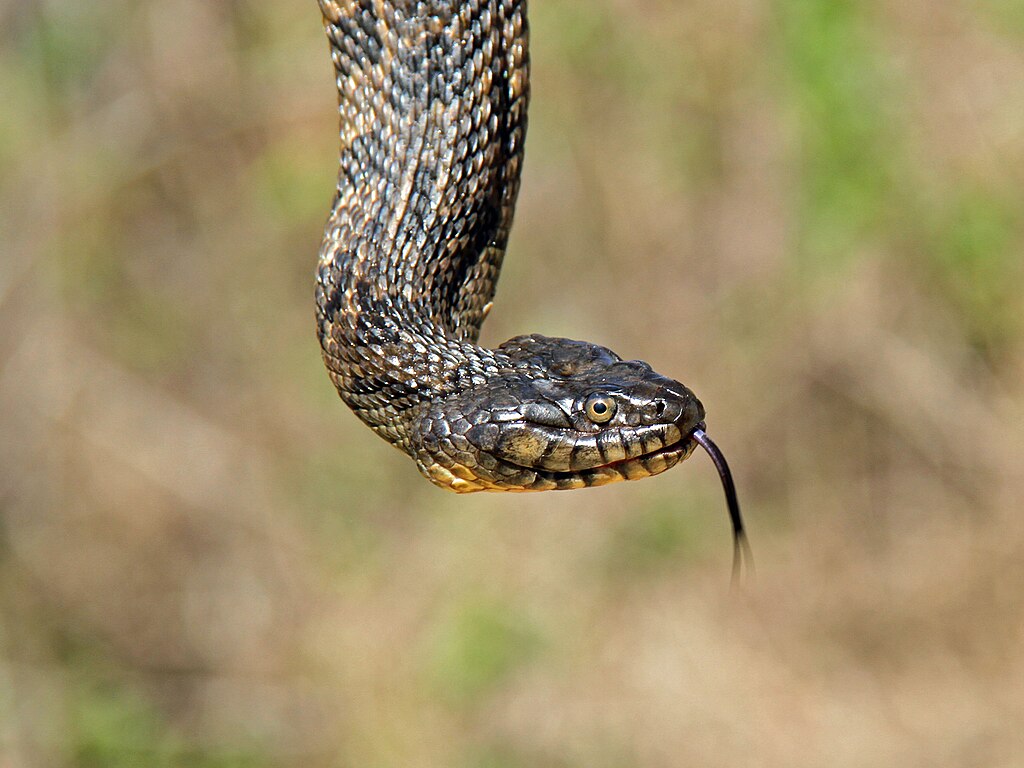
The Tentacled Snake sustains itself almost exclusively on a diet of fish, having evolved specialized feeding mechanisms perfectly suited to this prey type. Their diet typically consists of small to medium-sized freshwater fish native to their Southeast Asian habitats, with particular preference for slower-moving species that inhabit the same murky, vegetated waters. Studies of stomach contents have shown they rarely if ever consume amphibians, invertebrates, or other prey items that many other aquatic snakes might opportunistically take. The snake’s feeding behavior follows a strictly defined pattern: after capturing a fish with its specialized predictive strike, it quickly manipulates the prey to position it head-first for swallowing, a process facilitated by its rear-facing teeth. Unlike many snakes that may go weeks between meals, the Tentacled Snake tends to feed more frequently, typically every few days when prey is abundant. Their specialized tentacles play a crucial role in feeding success, detecting minute water movements and helping the snake distinguish actual prey from non-prey disturbances in the water.
Defense Mechanisms and Predators
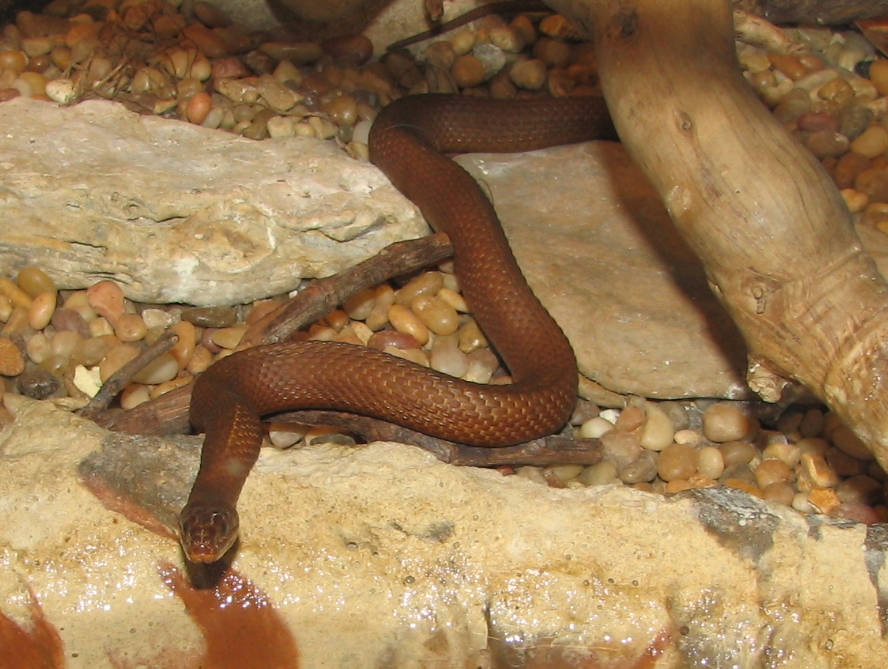
Despite being predators themselves, Tentacled Snakes must contend with various threats in their aquatic habitats. When confronted by potential predators, these snakes rely primarily on camouflage rather than aggression or venom. Their primary defense strategy involves remaining motionless, mimicking waterlogged sticks or aquatic vegetation – a disguise so effective that they often go completely unnoticed even by human observers. When disturbed, rather than attempting to flee, they frequently tighten their twig-like posture and remain still, doubling down on their camouflage strategy. Natural predators include larger fish, wading birds, monitor lizards, and other larger snakes that share their habitat. While the Tentacled Snake possesses mild venom delivered through enlarged rear fangs (making them opisthoglyphous), this venom appears specialized for subduing fish rather than serving a defensive purpose against larger threats. Their fully aquatic lifestyle also provides some protection from terrestrial predators that might threaten other snake species.
Scientific Research and Discoveries
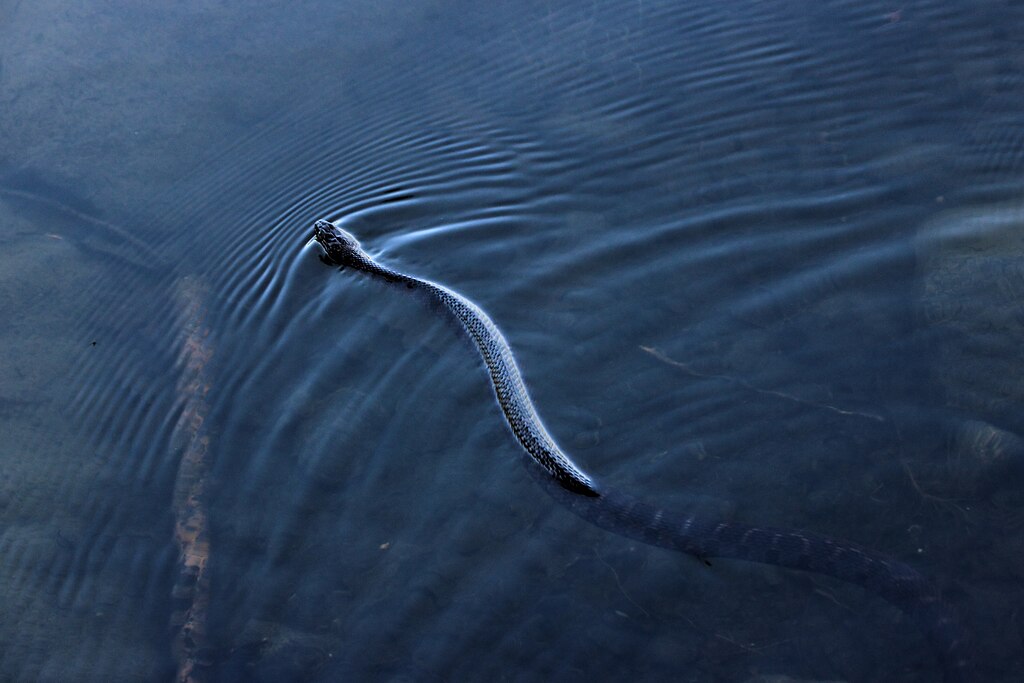
The Tentacled Snake has become the subject of fascinating scientific research, particularly regarding its unique predatory behavior and physiological adaptations. Groundbreaking studies by Dr. Kenneth Catania at Vanderbilt University have revealed the remarkable predictive striking behavior of these snakes, documenting how they exploit the hardwired escape responses of fish. High-speed camera footage has captured the precise timing of these strikes, showing reaction times among the fastest in the animal kingdom – often less than 15 milliseconds from the initiation of prey movement to strike. Other research has focused on the function of their namesake tentacles, with evidence now suggesting these specialized organs contain dense concentrations of mechanoreceptors that detect minute water movements. Anatomical studies have also examined the snake’s specialized lung adaptations that facilitate extended underwater periods without surfacing. Perhaps most intriguingly, ongoing research into the neurological mechanisms behind their inverted swimming ability may offer insights into vestibular processing that could have applications in human balance disorders and spatial orientation research.
Conservation Status and Threats
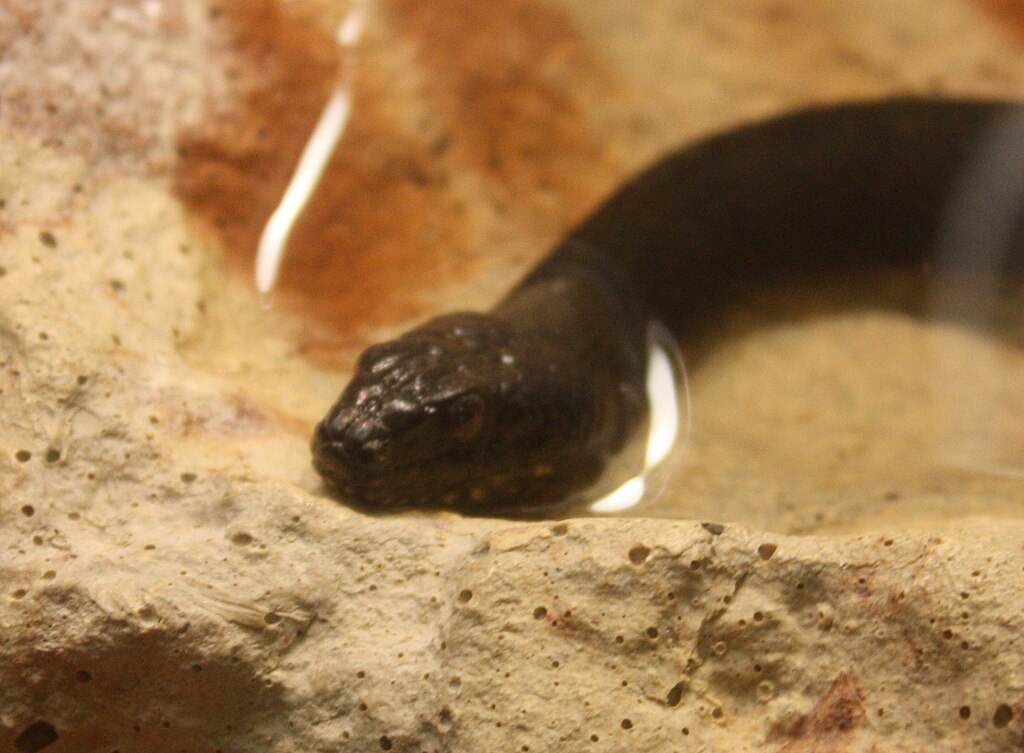
The Tentacled Snake currently lacks a formal conservation assessment by the IUCN Red List, creating challenges for targeted conservation efforts. While not considered broadly endangered, localized population declines have been documented in several parts of their range, particularly in areas experiencing rapid development and agricultural intensification. Water pollution represents a significant threat, as these snakes are highly sensitive to chemical contaminants that can affect both them directly and diminish their fish prey populations. Habitat loss through wetland drainage and the conversion of natural waterways to concrete channels eliminates viable habitat in many urban and suburban areas across Southeast Asia. Climate change poses an additional concern, as altered precipitation patterns may affect the seasonal water levels in their preferred habitats. In some regions, these snakes are occasionally collected for the exotic pet trade, though this practice appears to have minimal impact on wild populations compared to habitat-related threats.
Captive Care and Observations
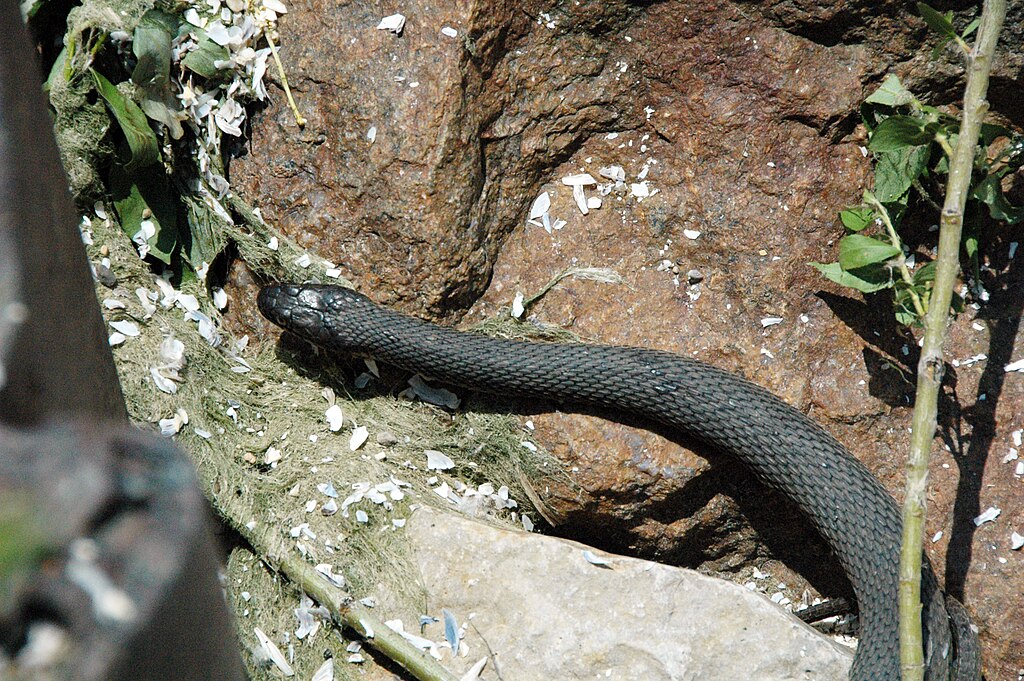
The Tentacled Snake has occasionally been maintained in specialized aquarium facilities, providing valuable opportunities for close observation of their unique behaviors. These snakes require carefully maintained aquatic habitats with specific water parameters, including appropriate temperature ranges of 75-82°F (24-28°C) and neutral to slightly acidic pH levels. Successful captive environments typically feature shallow water areas with ample vegetation and root structures that mimic their natural habitats and provide anchor points for their ambush positions. Feeding in captivity requires a steady supply of appropriate-sized live fish, as these specialized hunters rarely accept dead prey items. Captive specimens have allowed researchers to document their complete hunting sequences in controlled settings, revealing details about their predictive striking behavior that would be nearly impossible to observe in their murky natural habitats. Several major public aquariums now maintain educational exhibits featuring these unusual snakes, helping to raise awareness about their unique adaptations and the freshwater ecosystems they inhabit.
Cultural Significance and Human Interactions
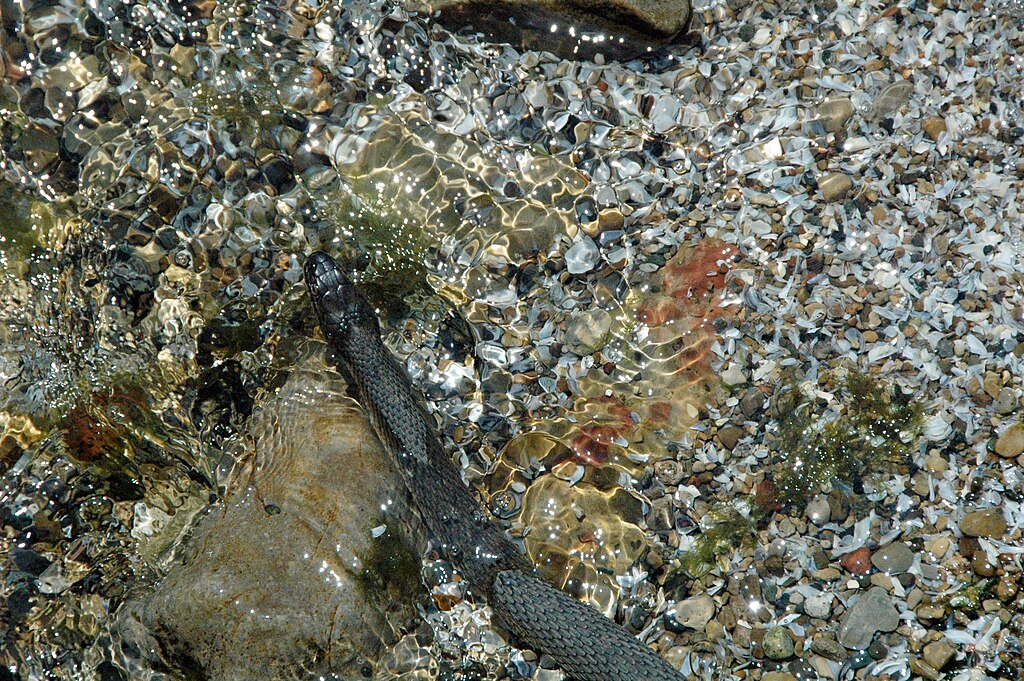
Throughout their native range, Tentacled Snakes have earned various cultural interpretations and local names that reflect their unusual appearance and behaviors. In parts of rural Thailand and Cambodia, these snakes are sometimes called “dragon serpents” or “ghost snakes” due to their eerie ability to remain perfectly still for hours before striking with lightning speed. Traditional fishermen in some regions consider encountering these snakes a positive omen for successful fishing, perhaps recognizing that their presence indicates healthy fish populations. Unlike many other snake species in Southeast Asia, Tentacled Snakes are rarely persecuted due to their fully aquatic nature and mild temperament when encountered by humans. They have minimal agricultural significance, neither helping nor harming rice production in the paddies they often inhabit. Among international wildlife enthusiasts and reptile keepers, these snakes have developed something of a cult following for their bizarre appearance and unique behaviors, featuring prominently in nature documentaries about unusual animal adaptations.
Related Species and Evolutionary History
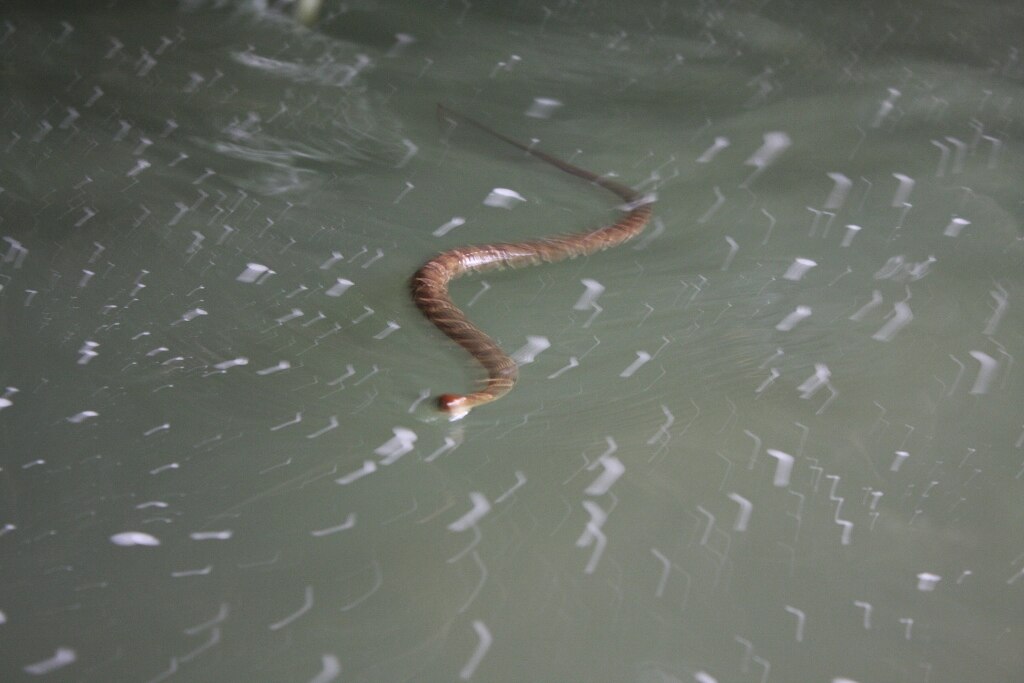
The Tentacled Snake represents the sole member of its genus Erpeton, highlighting its evolutionary uniqueness even among other aquatic serpents. It belongs to the family Homalopsidae (Asian water snakes), a group that began diverging from other snake lineages approximately 25-30 million years ago during the Oligocene epoch. Phylogenetic studies suggest that the specialized adaptations of the Tentacled Snake, including its distinctive tentacles and upside-down swimming ability, evolved relatively recently in evolutionary terms, perhaps within the last 5-10 million years. While other members of Homalopsidae show various adaptations to aquatic life, none have developed the extreme specialization exhibited by the Tentacled Snake. Its closest relatives include the Gerarda prevostiana (Gerard’s Water Snake) and various Enhydris species, which share some aquatic adaptations but lack the tentacles and inverted swimming behavior. Fossil evidence for the evolutionary history of this species remains sparse, leaving some questions about the precise pathway that led to its distinctive characteristics, though ongoing genetic studies continue to clarify its position in the snake evolutionary tree.
Conclusion

The Tentacled Snake stands as a remarkable example of evolutionary specialization, demonstrating how natural selection can produce seemingly counter-intuitive adaptations that prove highly effective in specific ecological niches. Its ability to swim upside down, combined with its predictive hunting strategy and specialized sensory apparatus, has allowed this unusual serpent to thrive in environments where other predators might struggle. As aquatic habitats across Southeast Asia face mounting environmental challenges, the future of this unique species may depend on greater recognition of its scientific importance and ecological value. The Tentacled Snake reminds us that even in well-studied animal groups like snakes, nature continues to surprise us with extraordinary adaptations that challenge our understanding of what is possible in the natural world.





